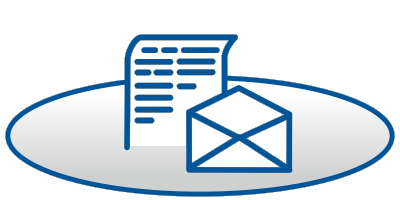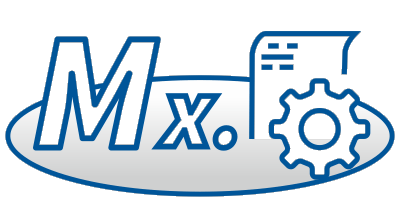Informix Machine Notes
Here you find actual Machine Notes to Informix Products that we prepared for you.
=================================
=================================
MACHINE SPECIFIC NOTES
FOR
IBM Informix Database Server 14.10.FC8 PRODUCT RELEASE
ON IBM AIX 7.2 64bit
DATE: 05 Apr 2022
=================================
OS Information : Built on AIX 7.2 Technology.
System Requirements
===================
1. This product was built on AIX 7.2 Technology using the following
compilers:
IBM XL C/C++ for AIX, V11.1 (5724-X13)
XL C/C++ Runtime 13.1.3
2. AIX patch requirement:
TL2 (7200-02-02-1810)
3. The UNIX graphical tools provided with this release require X Window
system X11R6 and Motif 2.3.4 or later runtime libraries.
4. The High Performance Loader utilities, onpload and ipload, require a
minimum of 35 MB of memory and 70 MB of swap space in order to run.
5. If you are using Java(TM) UDRs, please refer to "AIX Loader Domains" under
J/Foundation section for details.
6. Informix Dynamic Server uses the libraries and utilities provided by
the IBM Global Security Kit (GSKit) for data encryption and Secure Sockets
Layer (SSL) communication. The GSKit is bundled with the server and will
be installed on your machine as part of the server installation process.
Here are more details on the GSKit:
a. The GSKit is also bundled with other IBM products and might
already be present on your machine. If GSKit 8.0.55.25 is not
installed, Informix server will install GSKit in /usr/opt/ibm/gsk8_64
directory on your machine.
b. The GSKit installation directory must have 35 MB of free disk space.
c. Sometimes, a new version of Informix 14.10 (such as 14.10.xC6) also
installs a new version of GSKit on AIX. If the new version of the
database server fails to start with an error about not being able to
load libisi.so.2 and one or more older versions of the Informix
database server are still running on the machine, then you must stop
all those older Informix versions and then restart them (and start
the new version). This loads the new GSKit version libraries for all
Informix instances and thus also allows the new version to start
correctly.
Check the following web site for the latest AIX system requirements
for Informix Dynamic Server:
http://www-01.ibm.com/support/docview.wss?rs=630&uid=swg27013343
System Configuration
====================
1. Location of Shared Memory
The configuration parameter SHMBASE should be set to the following:
SHMBASE 0x700000010000000
If you are using Java UDRs, refer to the J/Foundation section for setting
the SHMBASE value.
2. Environment Variables
a. It is recommended that the environment variable INFORMIXSTACKSIZE be set
to 128 (the default is 64) if the application involves operations which
would require the Informix Dynamic Server to perform recursive
database tasks (for example, cascading deletes).
b. If you are using Java UDRs, set environment variable LDR_CNTRL to
include the value "USERREGS" and "LOADPUBLIC" before starting
Informix Dynamic Server:
export LDR_CNTRL=LOADPUBLIC@USERREGS
Feature Notes
=============
1. High Performance Loader
User-defined conversion routines must be provided in a dynamic, shared
library called ipldd11a_64.so. This library is installed in the
$INFORMIXDIR/lib directory. You can set the location of this file with
the HPL_DYNAMIC_LIB_PATH configuration parameter in the configuration
file pointed to by the PLCONFIG environment variable. For more details,
refer to the manual "High-Performance Loader User's Guide".
To create a 64-bit shared library, the environment variable OBJECT_MODE
should be set to 64 to convey to the compiler that a 64-bit object is to
be generated. The "-q64" flag for cc can also be used to indicate to the
compiler that 64-bit object is to be generated.
2. IPv6 Support
Informix Dynamic Server supports Internet Protocol Version 6 (128 Bit
Internet Addresses) as well as IPv4 (32 Bit Addresses).
In order for the machine name that is specified in the sqlhosts file to
resolve to the correct IP address, the name services files on the operating
system must be configured correctly. If the machine has an IPv6 address
configured, and the listener thread is bound to an IPv6 address, then the
name resolution file /etc/netsvc.conf must be configured to fetch an IPv6
address. Also any local machine settings must be correct in the
/etc/hosts file.
For compatibility with earlier versions of client and server products,
assign each host name with both an IPv4 address and an IPv6 address. If
the listener needs to be bound to an IPv4 address, and the name
services resolve the name in the order of the IPv6 address followed
by the IPv4 address, then an explicit IPv4 address needs to be put
in the host name field of sqlhosts file. Client applications should
also use the same setting.
3. J/Foundation (Java in the Server)
The IBM Runtime Environment, Java Technology Edition, Version 8.0
release is installed in $INFORMIXDIR/extend/krakatoa/jre and should be
used with the J/Foundation component.
A Java user-defined routine (UDR) runs in a Java virtual processor. Use
the VPCLASS configuration parameter to specify the number of virtual
processors for the server. You configure Java virtual processors in
the "Java configuration parameters" section of the configuration file.
The default onconfig.std file is in the $INFORMIXDIR/etc directory.
To develop Java UDRs for the server on this platform, use the 64-bit
IBM SDK, Java Technology Edition, Version 8 or an earlier version
according to Java compatibility guidelines. Java SDK 8 contains the
latest virtual machine technology from IBM and can be downloaded from
http://www.ibm.com/java/jdk/.
Location of Shared Memory
-------------------------
When using Informix Dynamic Server with J/Foundation, the
configuration parameter SHMBASE should be set to the following:
SHMBASE 0x700000030000000
AIX Loader Domains
------------------
If multiple shared libraries are loaded onto two VPs, one of which is
a Java VP, and the libraries are not loaded in the same order on each
VP, executing a function from the libraries can cause
Informix Dynamic Server to core dump with the following message in the
message log file:
09:35:58 Assert Failed: Exception Caught. Type: MT_EX_OS, Context: ill
09:35:58 Who: Session(15, informix@ibms70, 46918, 1075033896)
Thread(41, sqlexec, 4010c7d8, 3)
File: mtex.c Line: 372
09:35:58 Action: Please notify Technical Support.
You would typically encounter this error if your application is using
both C UDRs and Java UDRs.
To resolve this problem, the AIX loader domains concept is used. The
loader domain provides a means of loading shared libraries at the same
virtual address in a set of processes. The loader domain file is created
during the installation of Informix Dynamic Server. This is
installed as "/var/adm/ifx_loader_domain".
Informix Dynamic Server with J/Foundation on AIX requires the loader
domain file "/var/adm/ifx_loader_domain" to exist at all times. If the
file does not exist, create it as superuser using the following commands:
touch /var/adm/ifx_loader_domain
chgrp informix /var/adm/ifx_loader_domain
chmod 660 /var/adm/ifx_loader_domain
4. Kernel Asynchronous I/O (KAIO)
KAIO is enabled by default on this platform.
The Asynchronous I/O (AIO) subsystem is loaded by default but not
activated. No AIO server is started at AIX startup. The AIO server is
automatically started when applications are initiating AIO requests. It
stays active as long as it services AIO requests.
To disable KAIO, set the environment variable KAIOOFF:
KAIOOFF=1 ; export KAIOOFF ( for Bourne or Korn shell )
setenv KAIOOFF 1 ( for C shell )
Limit the number of resident memory segments allocated by
Informix Dynamic Server.
If Informix Dynamic Server allocates a lot of resident memory
segments and uses a lot of KAIO and direct I/O, KAIO read or write calls
might fail with errno 22 (EINVAL). EINVAL errors can lead to down dbspaces
or system aborts. The following error typically appears in the server log:
04:30:40 KAIO: error in kaio_WRITE, kaiocbp = 0x22b620d0, errno = 22
04:30:40 fildes = 258 (gfd 3), buf = 0x700000122b64000, nbytes = 4096,
offset = 130785280
The usual reason for these EINVAL errors is that the OS is running low
on resident memory pages because Informix Dynamic Server has too many
shared memory segments allocated as "resident," as well as pinned OS
kernel memory and KAIO resources.
You can prevent these errors by setting fewer, or no,
Informix Dynamic Server shared memory segments as resident.
Set the RESIDENT configuration parameter in the onconfig file to 1 or 0.
5. Network Protocols
The following protocols and interfaces are supported on this platform:
SOCKETS using TCP/IP
IPC using stream pipe (implemented using UNIX Domain Sockets)
To use SOCKETS with TCP/IP:
a. The NETTYPE entry in the configuration file and the nettype field in
the sqlhosts file entry must contain "onsoctcp".
b. To enable an IBM Data Server Client to connect to the database
server, the NETTYPE entry in the configuration file and the protocal
value in the sqlhosts file entry must contain "drsoctcp"
If a CLI or JCC client wants to connect to the database server
through DRDA while supporting SQLI connections, you must add a
DBSERVERALIASES entry to the configuration file that corresponds to
the sqlhosts file entry.
To use IPC (interprocess communication) with stream pipe:
a. The NETTYPE entry in the configuration file and the nettype
field in the sqlhosts file entry must contain "onipcstr".
Fast poll is supported with TCP/IP and stream pipe interfaces. To disable
fast poll, set the FASTPOLL parameter to 0 in the configuration file.
By default the fast poll is enabled (value is 1).
Remote 32-bit applications and tools (example: ESQL/C, 4GL, ISQL) can
only connect to the Informix Dynamic Server using the TCP/IP
protocol.
Local 32-bit applications and tools can connect to the 64-bit server
using either the TCP/IP sockets or the IPC stream pipe protocols.
6. No Age (Disable Priority Aging)
The no aging feature that disables priority aging of CPU virtual processors
by the operating system can be activated by setting the noage option of the
VPCLASS configuration parameter for the CPU virtual processors. For example,
the following configuration parameter entry specifies that there are 8
CPU VPs, each without aging:
VPCLASS cpu,num=8,noage
When the noage option is used, all oninit processes will run at priority
60 with fixed priority round robin type scheduling.
To override the default priority value for CPU VP class, set the
environment variable INFX_CPUVP_PRIORITY to the desired priority,
within limits (50 to 90) before starting the server.
The server checks and sets the CPU VP process to the defined priority
if the defined value is within the above range.
7. OnLine Backup and Restore (ON-Bar)
ON-Bar uses the XBSA interface. Some of the functions invoked by ON-Bar
are in a shared library supplied by third party storage management vendors.
For ON-Bar to access these functions, set the BAR_BSALIB_PATH parameter in
the configuration file to the full pathname of the library.
Using $INFORMIXDIR/lib/ibsad001_64.so as a symbolic link to the
library is deprecated and shall be discontinued.
Informix Interface for Tivoli Storage Manager (TSM) is supported on this
platform. The interface is built with TSM API Client version 5.3.2.
8. Pluggable Authentication Module (PAM)
PAM functionality is supported on AIX operating systems. PAM requires
the libpam.so library that is supplied by the Operating System vendor.
Use of PAM can be enabled or disabled by the system administrator. By
default, Informix Dynamic Server will use the traditional
authentication mechanism to avoid changes for the users.
The PAM modules typically reside in /usr/lib/security/64. The PAM
services are defined in /etc/pam.conf.
9. Processor Affinity
The processor affinity feature, which allows the pinning of a CPU
virtual processor to a physical processor in a multi-CPU configuration,
is supported on this platform.
10. Shared Memory Residency
Shared Memory Residency is supported. This feature can be enabled by
setting the configuration parameter RESIDENT to a non-zero value.
Please read the KAIO section in this file if you are using
Shared Memory Residency together with KAIO or DIRECT_IO, as this
combination may cause problems.
See APAR IC76872 for further information.
11. Single Sign On (SSO)
This feature requires AIX system library libgssapi_krb5 to be installed
on the system. This library is included in krb5.toolkit.adt (Network
Authentication Service App. Dev. Toolkit).
8. OnSNMP
The SNMP agent for OnSNMP is based on SNMP Research (SNMPR).
12. Secure Sockets Layer
Informix Dynamic Server uses the libraries and utilities provided by
the IBM Global Security Kit (GSKit) for Secure Sockets Layer (SSL)
communication.
a. Before uninstalling GSKit, verify that it is not needed on your
system. It is possible that software other than
Informix Dynamic Server requires GSKit. Uninstalling entails
removing GSKit packages as follows:
To remove package, as root user run the following
installp -u -g -V2 GSKit8.gskcrypt64.ppc.rte GSKit8.gskssl64.ppc.rte
b. If you want to restore Secure Sockets Layer capability after you
have uninstalled GSKit, see the readme file in $INFORMIXDIR/gskit
for how to install GSKit.
14. Simple Password Communications Support Module
The name of the IBM Informix shared library for Simple Password CSM on
on AIX is libixspw.so.
Features not Supported
======================
1. Rolling upgrades to IDS version 14.10.xC2 and 14.10.xC6 are not supported.
Rolling upgrades are not supported in IDS version 14.10.xC2 and 14.10.xC6.
Migration to these versions from a previous version require changes to
disk structures, and the conversion process is incompatible with a rolling
upgrade. When upgrading HDR and RSS secondary servers to version 14.10.xC2
or 14.10.xC6, you must follow the steps listed in the on-line documentation
under "Migrating an offline cluster to a new major version."
2. Concurrent I/O on Shared Disk Secondary Servers.
Defects Fixed in this release
=============================
For information about defects fixed in this release, see:
http://www.ibm.com/support/docview.wss?uid=ibm10870226
(C) Copyright IBM Corp. 2002, 2017
(c) Copyright HCL Technologies Ltd. 2017, 2022. All Rights Reserved.























